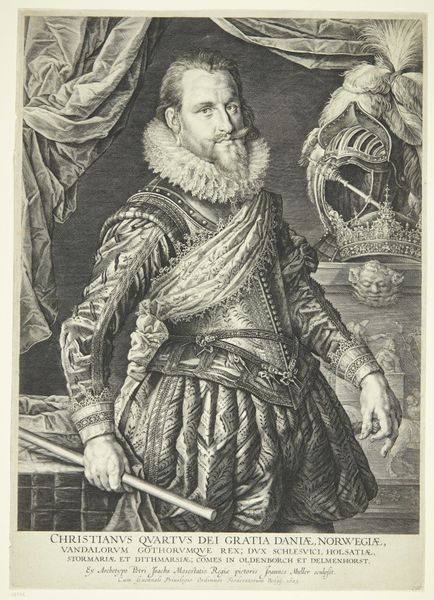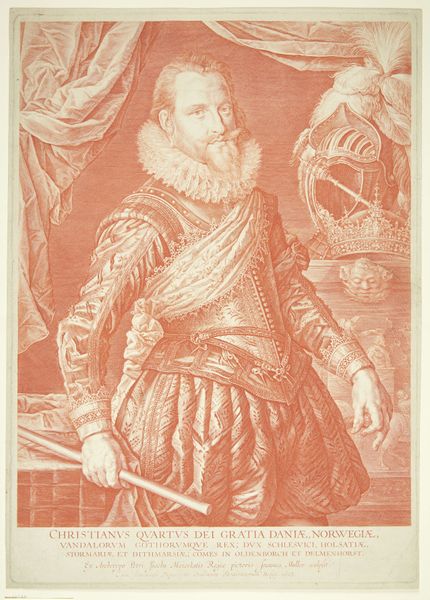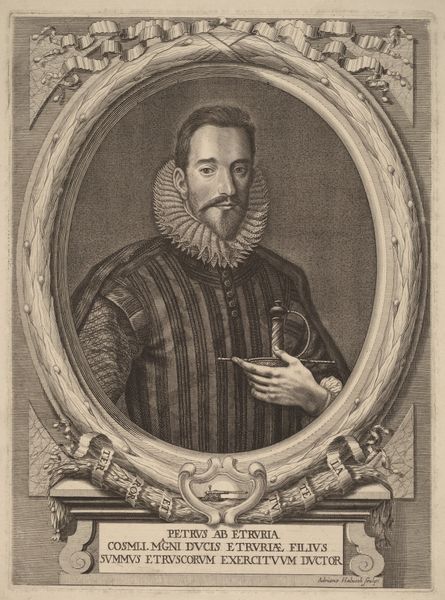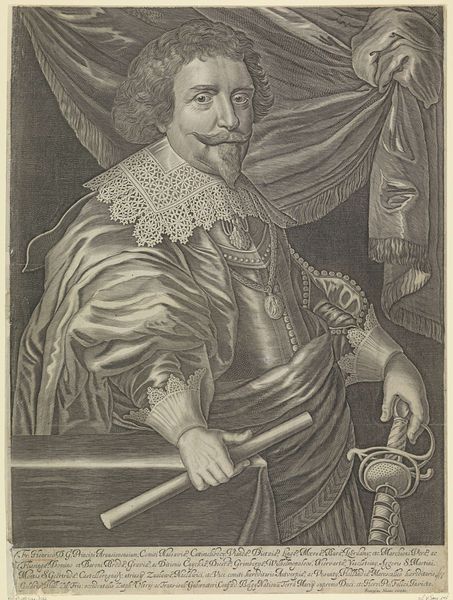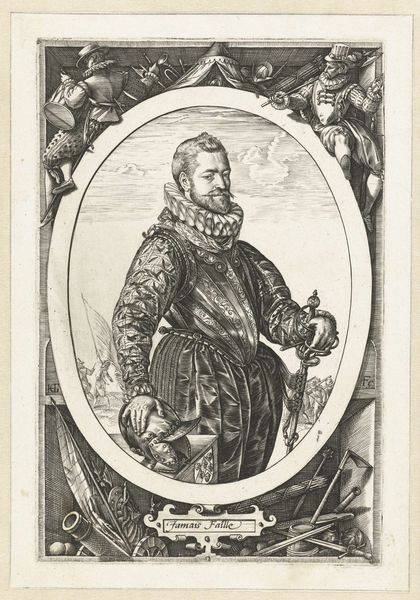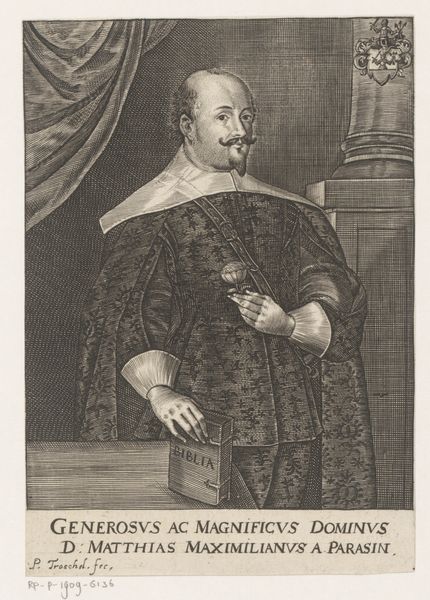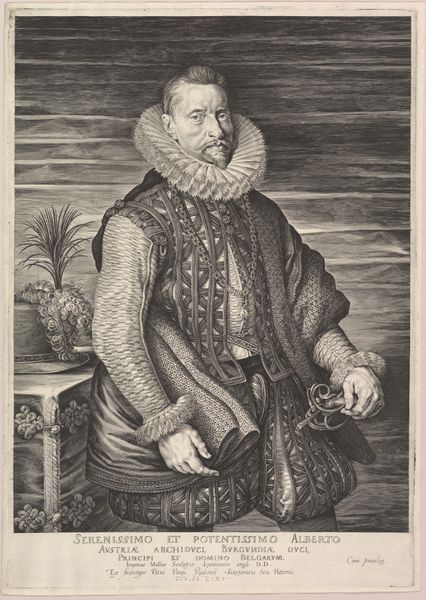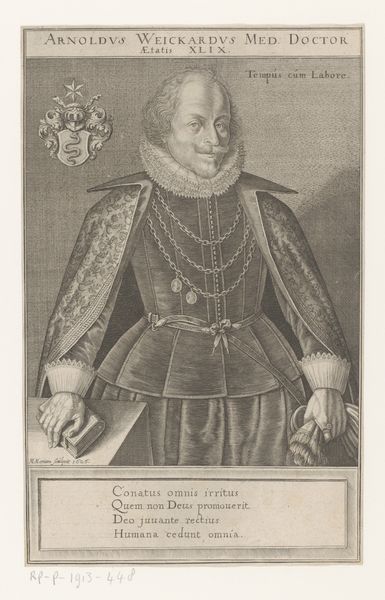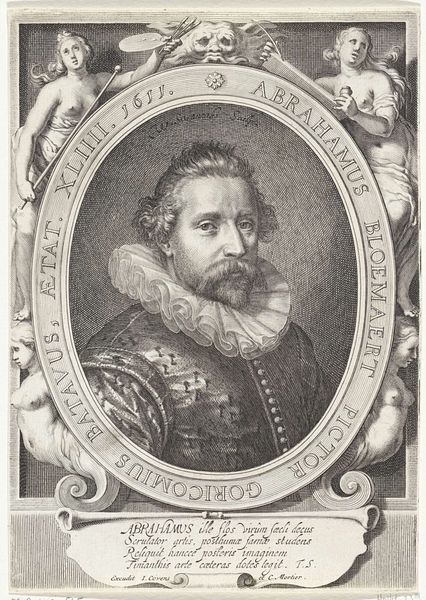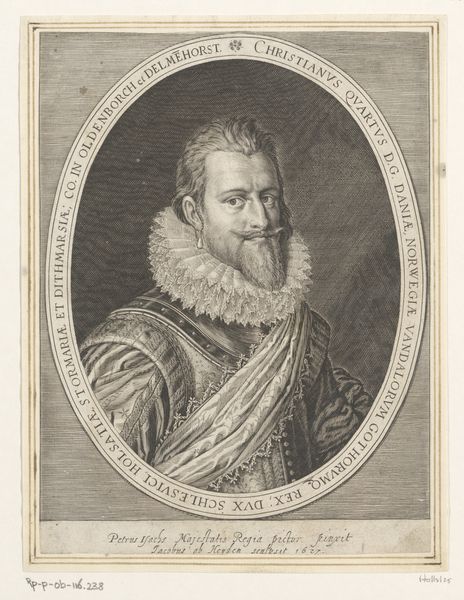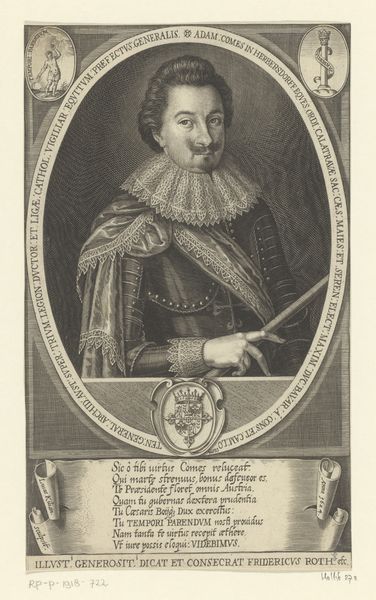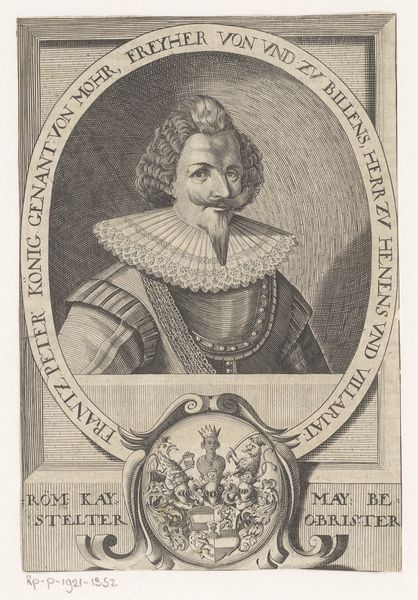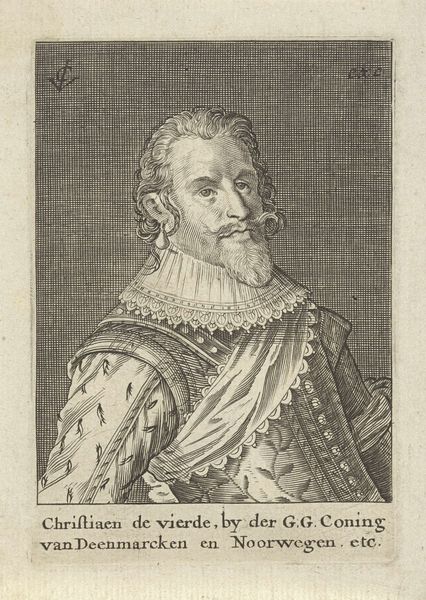
print, engraving
#
portrait
#
pencil drawn
#
baroque
# print
#
pencil drawing
#
portrait drawing
#
history-painting
#
engraving
Dimensions: 421 mm (height) x 296 mm (width) (bladmaal)
Editor: This is "Portrait of Christian IV," an engraving from 1625 by Jan Harmensz. Muller, held at the SMK. It strikes me as a very formal and meticulously detailed portrait, befitting a king. What do you see in this piece, particularly from a historical context? Curator: Beyond the artistry, I see a deliberate construction of power. Notice the King's lavish attire, the crown and helmet displayed prominently - they're not just decorative. The very act of commissioning and disseminating such a portrait speaks to the burgeoning absolutism of the era. What kind of message do you think Christian IV was trying to project to his subjects and to other European powers? Editor: I guess he's aiming for an image of authority and wealth, confirming his right to rule, right? The symbols all reinforce that message. How would an image like this have been circulated and received at the time? Curator: Prints like these served as crucial propaganda. They were relatively easy to reproduce and distribute, reaching audiences beyond the royal court. Think of them as the "official" image, countering dissenting narratives, and visually reinforcing social hierarchies. Consider the political climate – were there internal challenges to Christian IV's rule? Were there ongoing wars? How might this image have been intended to address those challenges? Editor: That's a great point; it makes me consider how art served as more than just art; it had a real function. I hadn't fully considered its use as political tool and the extent of its reach. Curator: Exactly! It's fascinating to unpack the layers of meaning embedded within even a seemingly straightforward portrait. Understanding that interplay of art, power, and audience really enriches our experience of art history. Editor: This was great, now I see the power of portraits like these in shaping political perception back in the 17th century. Curator: Indeed! This helps us appreciate art's dynamic role in social and historical processes.
Comments
No comments
Be the first to comment and join the conversation on the ultimate creative platform.
